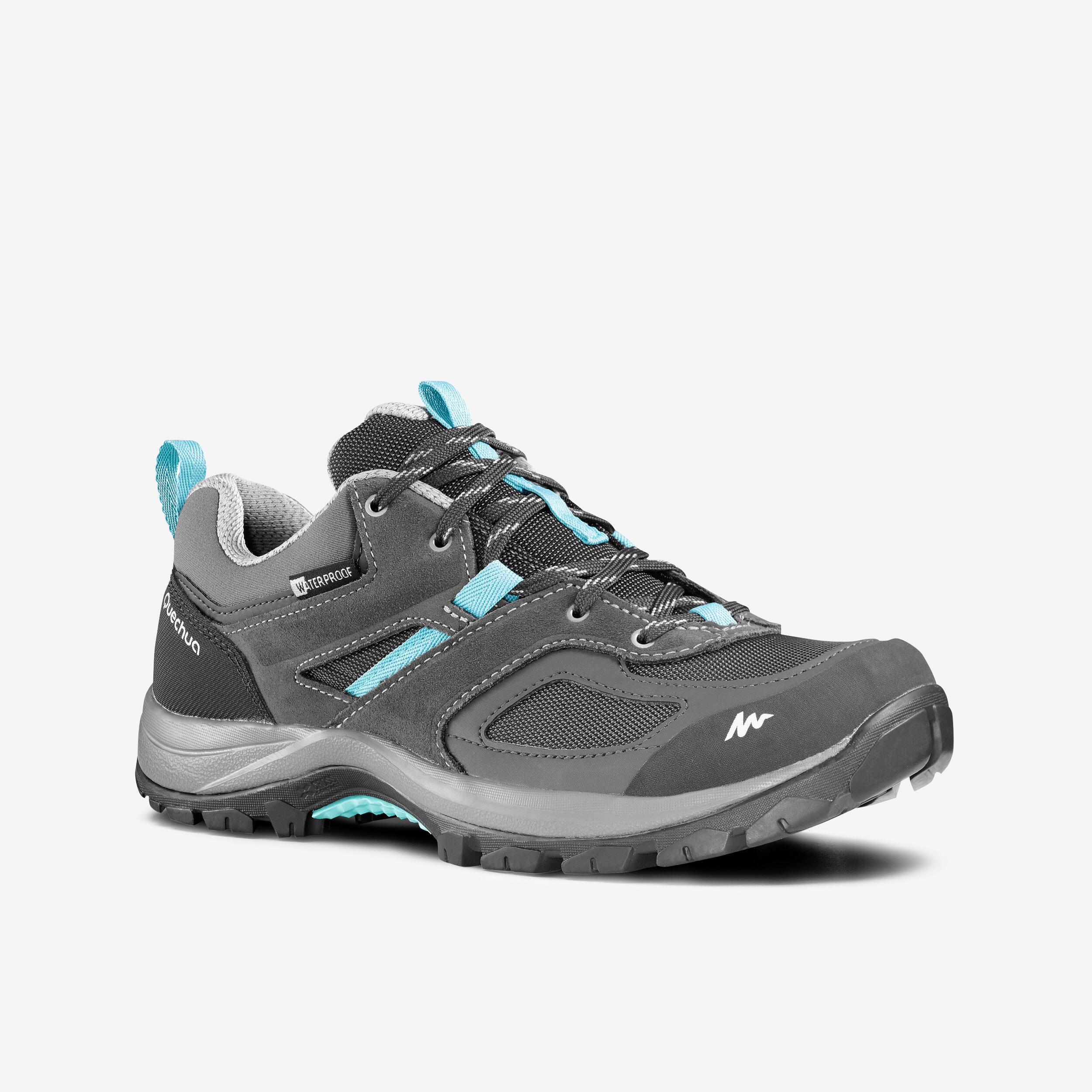














quechua
Women’s Waterproof Hiking Shoes – MH 100 Grey/Blue
$75.00
These waterproof hiking shoes are made to keep you going regardless of the weather. Protect your feet with comfortable cushioning along the entire length of the sole, a stone guard for your toes, and a waterproof membrane to keep feet dry.
4.3/5
(82 )
5
43
4
31
3
3
2
1
1
4
100%
Mon, Apr 01, 2024
Weng Kwong
-
: [object Object]
good hiking shoes
| Value for money | 4 | |
| Cushioning | 4 | |
| Waterproof | 4 | |
| Traction | 4 |
Masyhur
Dear Weng Kwong, thank you for your time in rating our product. We are glad that we managed to delight you with the standards of our product. We have read through your comments and will take note of these points into improving ourselves to better satisfy your needs. Thank you
once again for your time and we hope to serve you again soon! REGARDS, MASYHUR MOHAMMADCUSTOMER SERVICE DEPARTMENTDECATHLON SRI DAMANSARA
...Wed, Mar 27, 2024
Bhavna
-
: 3 to 8 weeks
: [object Object]
Bought these for my Kashmir trip. They can be worn in light snow; however they tend to slip at times. They are not entirely snowproof and become heavy when damp. They have a good grip on surfaces without snow. Will prove really good for trekking. Considering the price, it is a
good buy. Will test them in heavy Mumbai rains as the Sales rep claimed they are waterproof and will survive the rains. The fit is pretty comfortable. Am happy with the Sales Rep's guidance and the shoes have lived upto my expectations (set by the Sales Rep). Am satisfied with my purchase.
...| Value for money | 5 | |
| Traction | 4 | |
| Waterproof | 3 | |
| Cushioning | 4 |
Fri, Feb 09, 2024
Devendra
-
: 4 to 6 months
: [object Object]
Very Good Waterproof Shoes for Golfing. Esp during Winters when the Grass is wet & lots of Dew.
Sat, Jan 13, 2024
madhavi.
-
: 8 to 12 months
: [object Object]
Dependable when hiking in the mountain. Strongly recommend it
| Value for money | 5 | |
| Traction | 5 | |
| Robustness | 5 | |
| Waterproof | 5 |
Sun, Dec 31, 2023
性價比高
Erica
-
: 2 week or less
: [object Object]
性價比高
| Cushioning | 5 | |
| Traction | 5 | |
| Waterproof | 4 |
Icy
Erica你好, 感謝你對香港Decathlon的支持,以及是次購物經驗反饋!我們很高興你找到合適的產品及對其滿意度,能帶給你滿意的購物經驗是我們重要的本份! 若有關於產品的任何建議或疑問,都歡迎再與我們聯絡。希望在未來能不斷帶給你更多更好的運動體驗!期待再次與你見面! 祝你有愉快的一天!! Icy ChanDecathlon Hong Kong Hiking & Trekking Team
Mon, Dec 25, 2023
apoorva
-
: More than 1 year
: [object Object]
good
Tue, Nov 14, 2023
Shoes
Alice
-
: 3 to 8 weeks
: [object Object]
Good👍🏼👍🏼
| Cushioning | 4 | |
| Traction | 4 | |
| Waterproof | 5 |
Icy
Hi Alice, Thank you for supporting Decathlon Hong Kong and your feedback on your experience with our product!We sincerely appreciate your insight! It's also our pleasure to ensure you have the best experience with our products! We can't wait to offer you more and better produ
cts in order to delight your sports experiences! If you have any more questions, comments, please feel welcome to reach back out as we would be more than happy to share and assist. Hope to see you around soon! Have a nice day! Icy ChanDecathlon Hong Kong Hiking & Trekking Team
...Tue, Oct 10, 2023
Good product
Kelvin
-
: 3 to 8 weeks
: [object Object]
Good product
Fitri
dear kelvin, Thank you very much for the 5-star rating for our store and our services. It is very interesting for you to say that you had a wonderful journey at our store; I equate the journey to having an enjoyable shopping experience. We at Decathlon Gurney Paragon Penang tr
y our best to provide customers with an experience unlike at other retail outlets however our ascendance to perfection is a work in progress. If you have any further comments to provide please call us at our hotline at 04-266 3157 or email us at [email protected]. Thank you once again for your patronage and we hope to see you soon. Muhd FitriSport Advisor Mountain DepartmentDecathlon Penang Gurney Paragon
...Fri, Aug 25, 2023
Fit and like the colour
John
-
: 3 to 8 weeks
: [object Object]
I could only comment as titled as I have not taken them out for walk yet.
Nikesh
Dear John, thank you for your time in rating our women's waterproof shoes. We are glad that we managed to delight you with the appearance of our shoes. Also, we are sure you would love the feel of the product. Thank you once again for your time and we hope to serve you again s
oon! Best Regards,NikeshMountain Department
...Tue, Jul 25, 2023
Tejaswinee
-
: 3 to 8 weeks
: [object Object]
Waterproof is not good in this design. Look wise too good and comfortable in trek. Water gets inside when gets in contact with it.
| Cushioning | 5 | |
| Traction | 5 | |
| Waterproof | 2 |